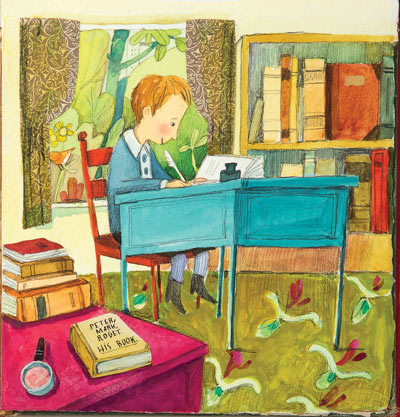Spring has arrived and, with it, wedding season. Brimming with adventure, humor, danger, surprises, mystery and, of course, love, these four new nuptial-themed romance novels will surely send you swooning.
WELCOME TO THE FAMILY
In It Happened One Wedding by best-selling author Julie James, successful investment banker Sidney Sinclair is caught up in her younger sister’s whirlwind wedding plans. Unfortunately for Sidney, being maid of honor means she has to deal with Vaughn Roberts, the sexy brother of her sister’s groom. An experienced FBI agent, Vaughn has a love-’em-and-leave-’em approach to women: He dates a lot but has no interest in commitment. Sidney has dated too many guys who share Vaughn’s attitude and has decided she’s done with playboys. She’s made a list of requirements for her next boyfriend, and Vaughn doesn’t seem to have any of them.
Unfortunately for Sidney, she can’t ignore the powerful attraction growing between her and Vaughn, especially when they’re constantly thrown together as part of the wedding preparations. Vaughn’s having his own problems because spending time with Sidney is making him question whether he truly wants to avoid commitment—or if he just hasn’t met the right woman until now.
This battle-of-the-sexes novel is rich with detail about the world of investment banking and FBI undercover work. The secondary characters are charming, while Vaughn and Sidney will tug at readers’ hearts and make them smile.
A KILLER BRIDEGROOM
Otherwise Engaged, the latest historical romance by Amanda Quick (aka Seattle’s Jayne Ann Krentz), is set in 19th-century London. In the opening chapter, intrepid world traveler Amity Doncaster saves the life of Benedict Stanbridge, finding herself drawn to the mysterious engineer. It isn’t until later, when the report of her bravery causes gossip in London, that their paths cross again. And Benedict’s arrival is none too soon, because the scandal has placed Amity directly in the path of a serial killer known as the Bridegroom. Benedict immediately joins forces with Amity to begin a search for the killer, who turns out to be a formidable opponent. Despite their combined talent and intelligence, and the fact that they’re aided by a Scotland Yard investigator and Amity’s sister, whether they will survive the machinations of the madman is anyone’s guess.
Historical details provide a wonderful backdrop to this story of romance and murder. Readers will particularly enjoy the creative weapon employed by Amity, the intricacies of the mystery plot that will keep everyone guessing as to the identity of the killer and the heated attraction between Amity and Benedict. If you love a good mystery with your romance, this one’s for you.
TO THE ENDS OF THE EARTH AND BACK
A Wedding by Dawn—the second historical romance from Alison DeLaine—opens with the introduction of Nicholas Warre, the handsome Lord Taggart. He is desperately in need of funds to save his estate, which he’s determined to secure by marrying a wealthy heiress. Although Lady India Sinclair is equally determined not to marry, her father has given his consent for her to marry Nicholas in return for a large sum of cash. The dice, it would appear, have been cast. But Nicholas soon learns that striking a bargain with her father and actually finalizing a marriage with India are two very different things. First he must find her. When Nicholas tracks India down to the Mediterranean, he discovers her dressed as a sailor and downing ale in a seaside tavern. After India starts a brawl, Nicholas fights his way out of the tavern—with bruises, yes, but also with India in hand. Victory seems within his grasp, but he quickly learns that nothing involving Lady Sinclair is ever easy. The two bicker their way across Europe and eventually back to England, after a brief wedding ceremony in Paris. Both are hiding secrets; both have vulnerable hearts; and both have fallen in love. If they can only bring themselves to cry peace and bare their souls, they may find happiness. However, the cost of exposure may be too high, even for these two brave and resourceful people.
In this tale of adventure and romance, two honorable, caring people are caught in circumstances that would doom a happy ending for any ordinary couple. But Nicholas and India are not just any hero and heroine. If ever a couple deserved a happily-ever-after, it’s India and Nicholas.
THEY MEET AGAIN
Best-selling author Victoria Alexander matches an American entrepreneur and an English lady in The Scandalous Adventures of the Sister of the Bride. When widowed Lady Delilah Hargate joins her family at Millworth Manor to aid in the preparations for her sister’s wedding, she’s stunned to learn that the groom’s best friend is Samuel Russell, the man she spent one very enthralling night with in New York a few months ago. She thought she’d never have to see him again, but now that he’s here, she can’t stop thinking about him. Given that Samuel is a houseguest, Delilah can neither avoid nor ignore him. For his part, Samuel is delighted to be thrown into Delilah’s company. He hasn’t been able to forget their passionate night and plans to learn much more about the lovely Delilah during his stay. However, between wedding preparations, Delilah’s stubborn insistence that she is not in love with him and frustrating problems with an experimental motorcar, Samuel’s got his work cut out for him. Delilah is having her own problems. Although Samuel is not a man who fits her list of requirements for a husband, she can’t seem to keep herself from being utterly charmed by him.
This turn-of-the-century tale is filled with clever dialogue and simply wonderful characters. Readers will fall in love with the handsome, sexy Samuel and adore lovely, stubborn Delilah, while finding the historical snippets detailing the arrival of early motorcars in England intriguing.
Lois Dyer writes from her home in Port Orchard, Washington.
























